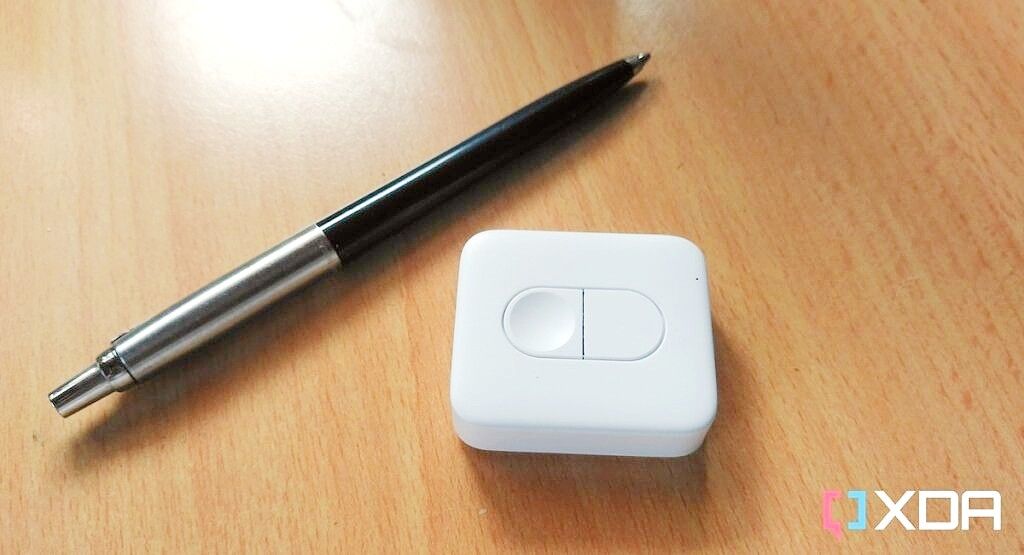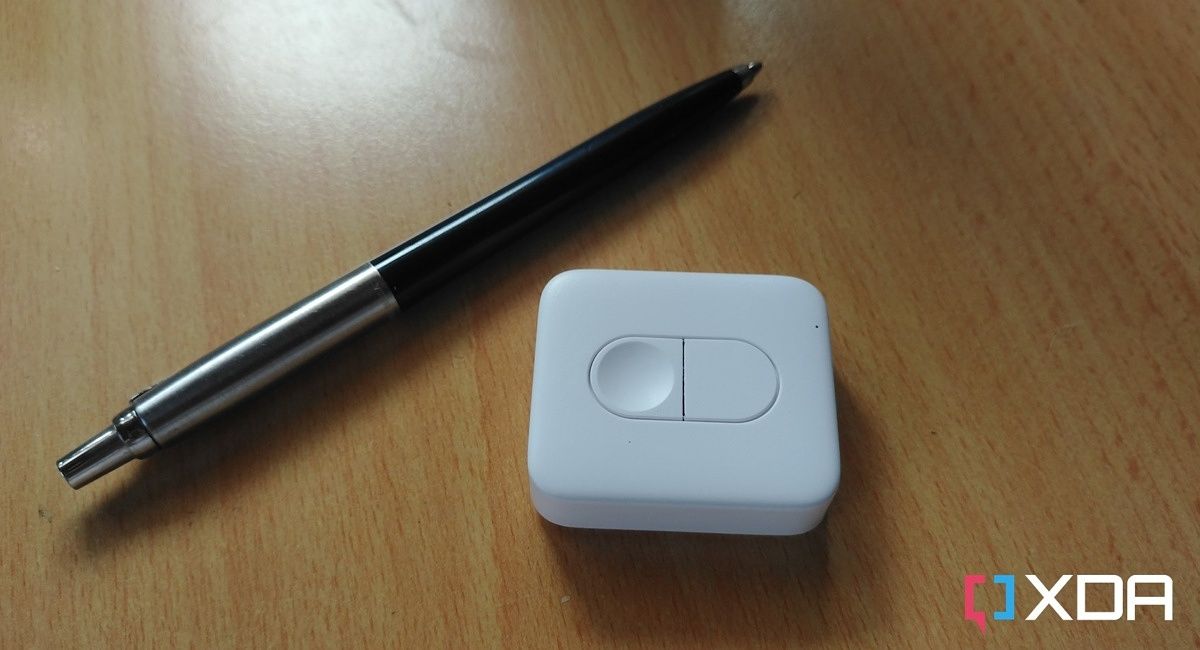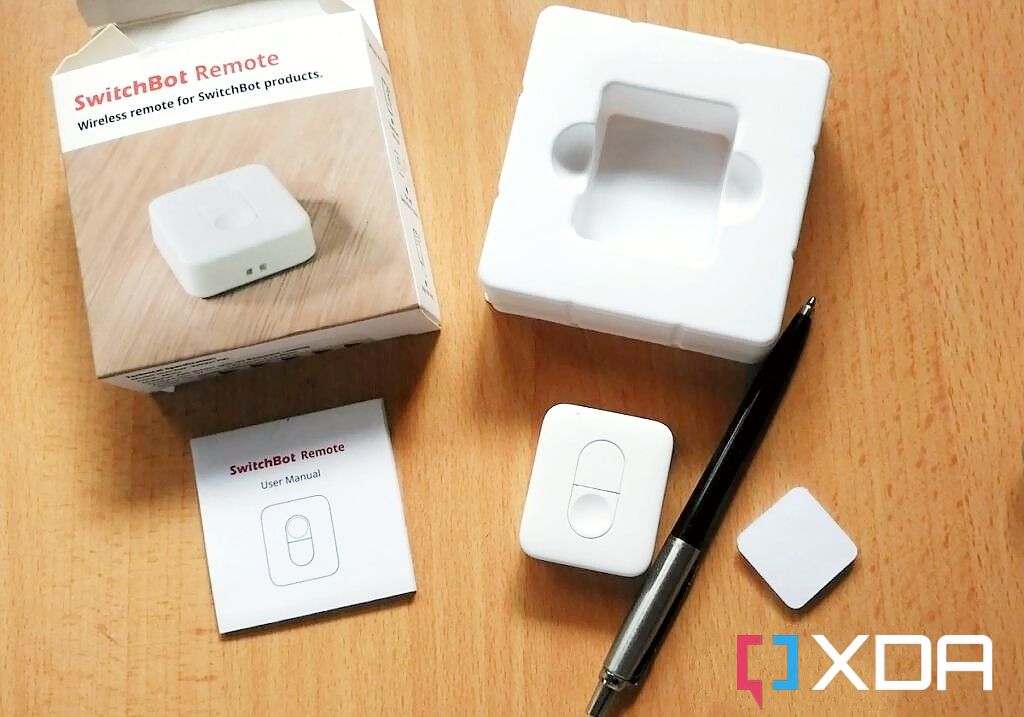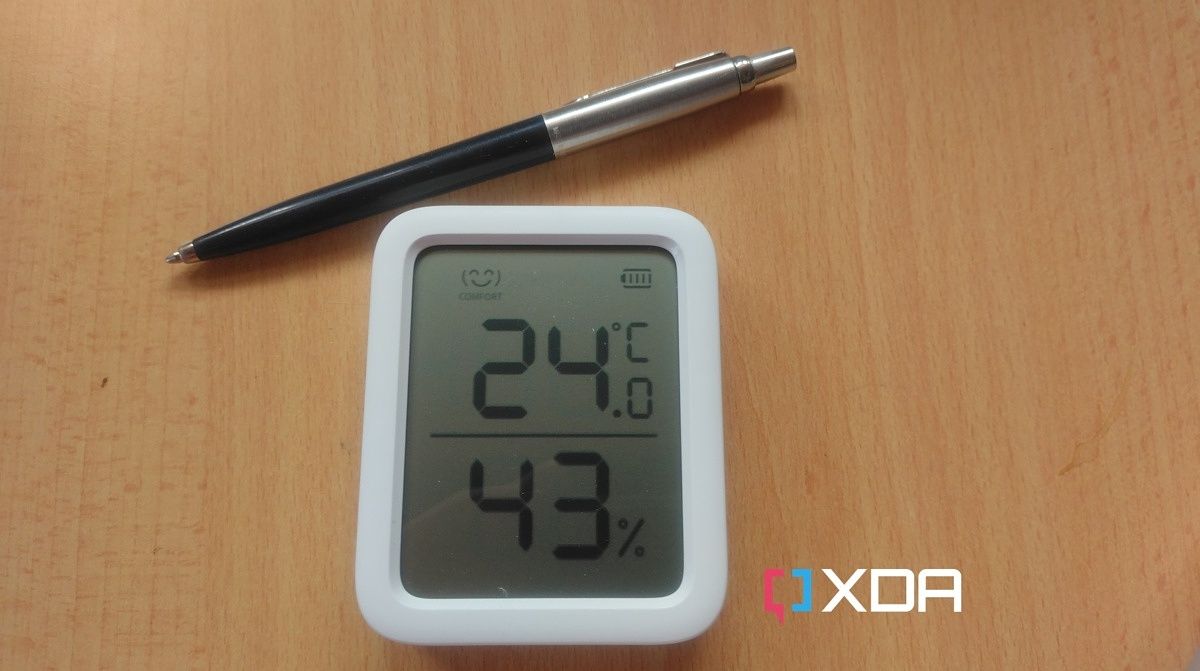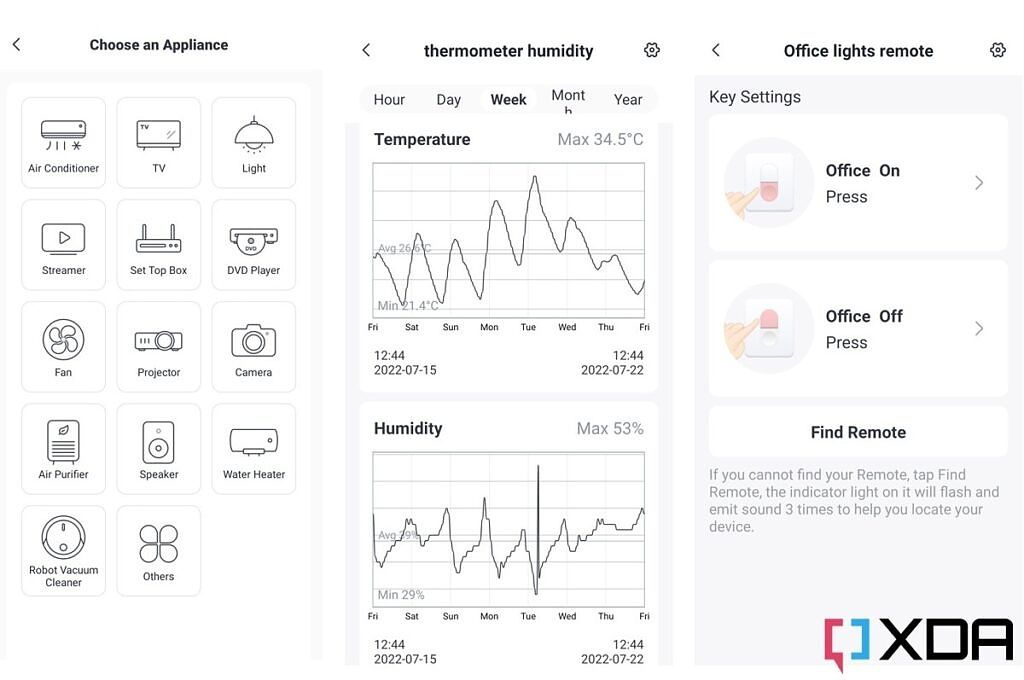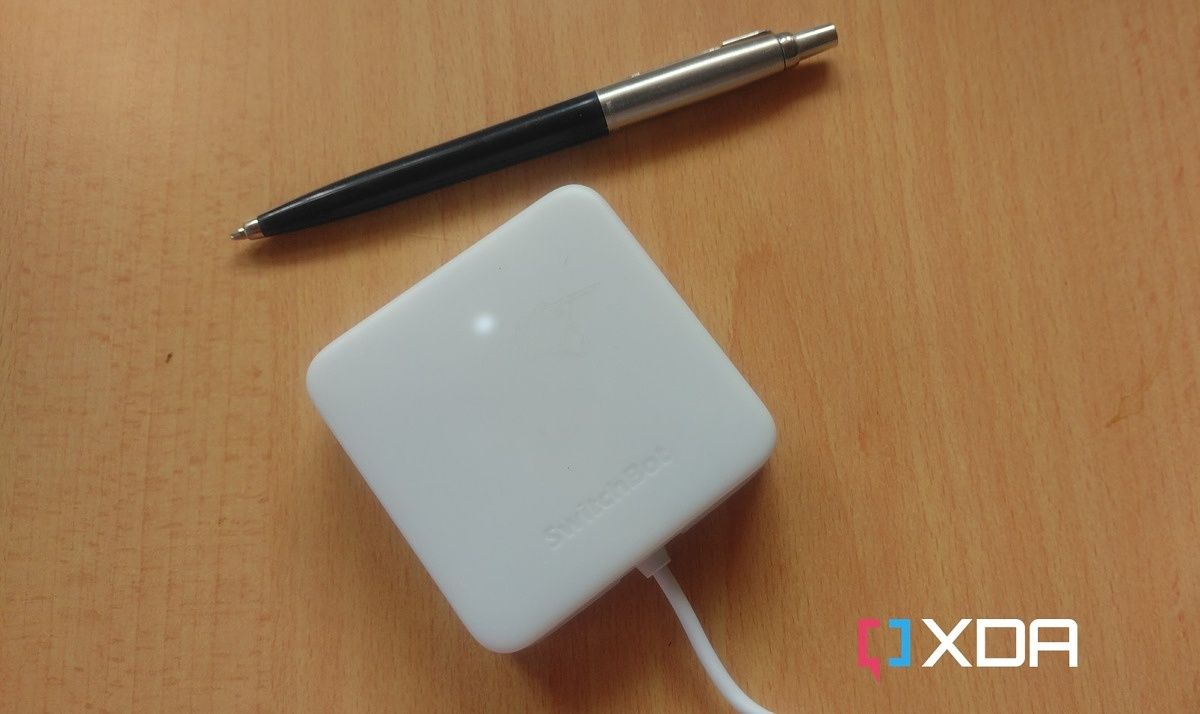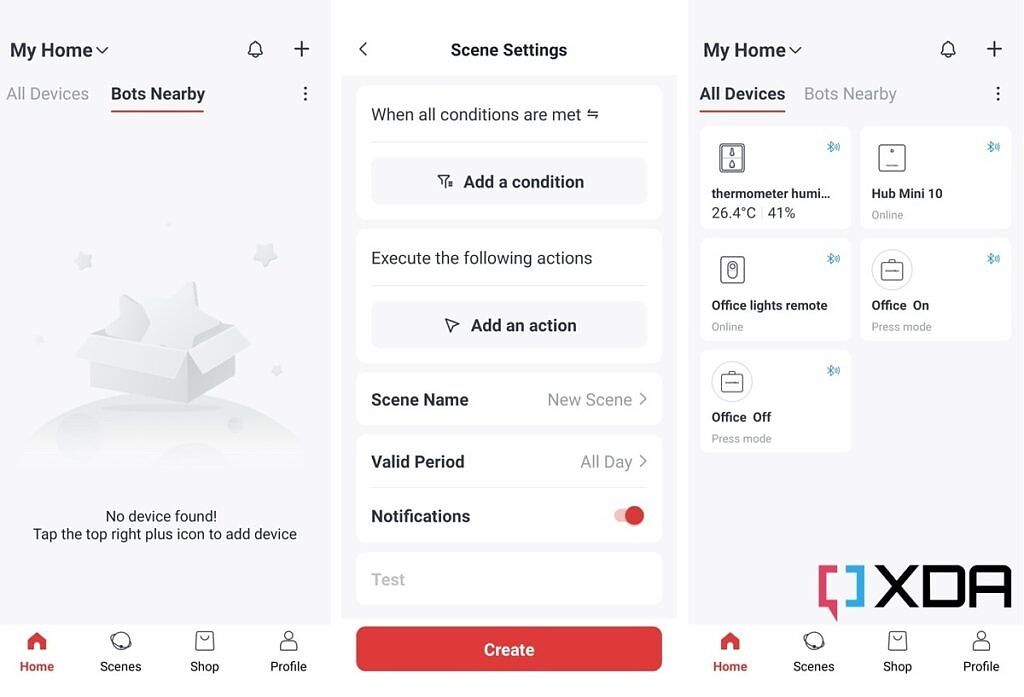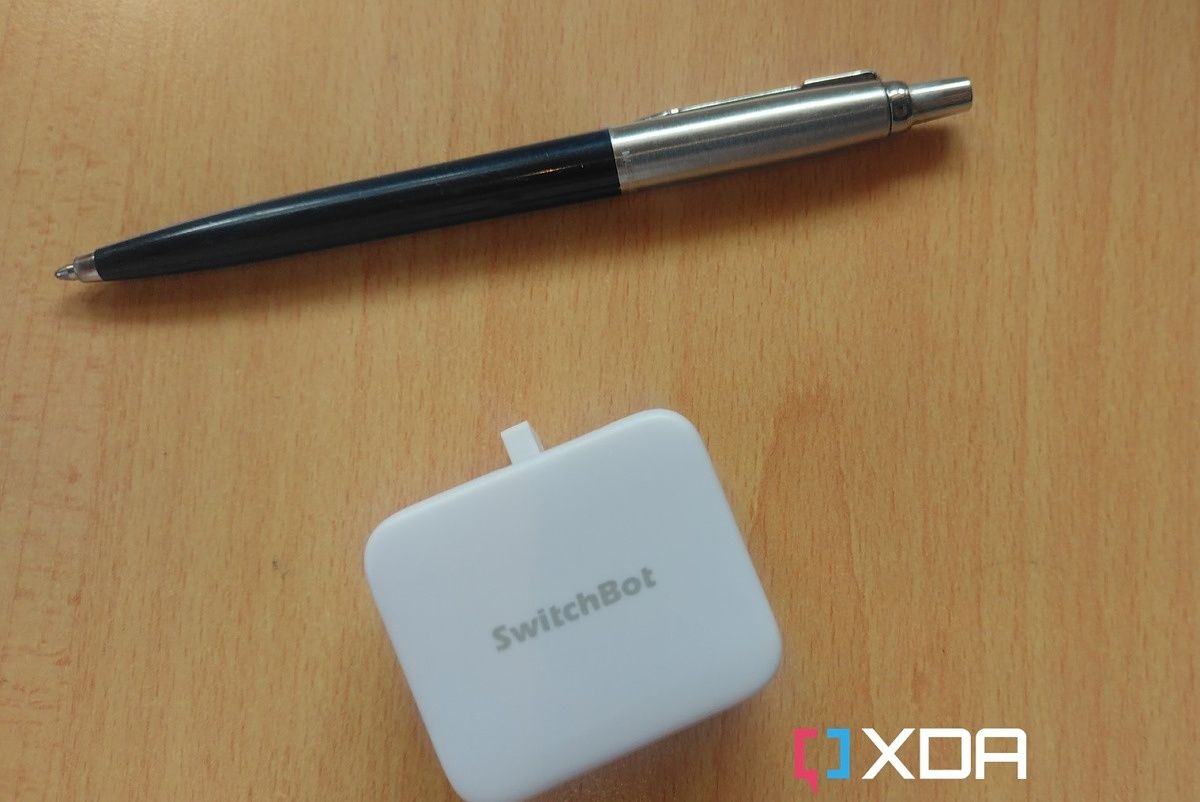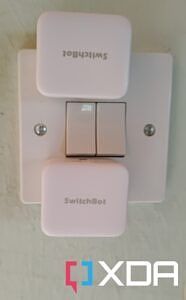SwitchBot offers a range of products to introduce smart components into your home. From automated curtain openers to hands-off light operation and security devices, the SwitchBot range could ease your journey into smart home products
I live in a dumb home. Built one hundred years ago with solid brick interior walls, it is not receptive to any appliance that relies on a Wi-Fi signal. Presently, I have a Wi-Fi mesh system throughout the house to try and get some sort of Wi-Fi signal in each room. I also have Wi-Fi repeaters to run my robot vacuums like the Dreame Bot D10 Plus on test throughout the property. So the house is not a perfect candidate for a smart home environment.
But I really like the advantages of a smart home and want some of the benefits it offers. So I started my journey there with some technology from SwitchBot. SwitchBot sells a range of products that will get you started on the road to a smart home. Their products range from curtain rods and motors for automated curtain adjustment to automatic humidifiers and LED strip lights, there will be something to start you off.
My ‘starter pack’ from SwitchBot included two $29 SwitchBot smart button pusher devices, two $19 SwitchBot remote control one-touch buttons, a $14.99 Thermometer and Hygrometer meter, and a $39 SwitchBot hub.
The SwitchBot button pusher device is designed to be stuck with an adhesive pad to a switch so that when the switch is invoked, a mechanical arm extends from the device housing and physically turns on the light switch or power switch.
The SwitchBot remote can be configured in the app to invoke the button pusher to turn on or off the switch, or power supply where the button pusher is situated. It can be used in two ways and in reality, I did not need the second remote control device.
The Thermometer and Hygrometer meter passively records the temperature and humidity and displays them on the app. It is designed to be used with other devices and programmed in the app to switch on other appliances using the SwitchBot smart button pusher when the programmed threshold is reached.
If you buy the correct combination of SwitchBot items, you can get your smart home up and running fairly easily. In essence, there is no complicated wiring to do – and you do not need to use voice control if you do not want to. The products can be controlled by the Switchbot app, and most of the devices can be controlled by a remote control device. The setup seems fairly easy for each device, and you can get your smart home up and running easily if you want to. I was inspired to give it a go.
Navigate this review:
SwitchBot Range: Pricing and availability
SwitchBot's devices include items such as the smart humidifier filter for the SwitchBot humidifier for $7.99 to the Wi-Fi smart lock for $129.99.
SwitchBot Range: What's in the box?
SwitchBots are a modular set of components that are bought separately and combined to get the automation solution you want for your home. Each box contains the item itself and a range of other accessories. For example, the $29 SwitchBot smart button pusher contains the device itself, a user manual, a spare adhesive pad, and two add-on adhesive pads.
The $19 SwitchBot remote control one-touch button contains the remote, a user manual, and an adhesive pad. Indeed, only the SwitchBot Thermometer and Hygrometer meter did not have any adhesive pads included in the box as the device itself had a recess to hang it on the wall.
The $14.99 Thermometer and Hygrometer meter is designed to be used with the $69.99 SwitchBot smart humidifier or other compatible devices such as air-conditioning units. The Thermometer and Hygrometer meter will record the temperature and humidity in the room. It can be programmed in the app to either switch on the air-conditioning if the temperature gets too high, or start the smart humidifier if the humidity gets too low
About this review: This review was written after testing a selection of SwitchBot home automation products, provided by SwitchBot for a period of six weeks. SwitchBot did not have any input in this article.
Switchbot Range: Design and Features
SwitchBot has a range of home automation products that integrate with Alexa, Siri, and Google Home.
- Simple devices to add home automation to your home
- No need to change existing switches or appliances
- Simple setup and installation
- Integration with existing devices
- Control from one central location
- Voice assistant compatibility
The $99 curtain rod smart electric motor sits on a curtain rod and can control the opening and closing of curtains or shades as per a specific schedule. The mini plug will switch off the power to appliances remotely, or use a set of rules in the hub to automate the power to the device. You can install security cameras to monitor your space and receive push notifications when activity is detected. Likewise, you can automate aspects of your routine so that you no longer need to manually remember to do things. Obviously, you can turn the coffee machine on, or switch on the air conditioning if the temperature reaches a certain point.
Intelligent automation
The $39 SwitchBot hub will pair with any of your current devices that operate using infrared and allow you to control them all using the SwitchBot app on your phone.
Overall, you can apply rules to the hub so that when certain conditions are met, the hub will trigger an action with the remote item. Similarly, you can add appliances to the app to control a variety of appliances from one app. The app then behaves as a remote control device so you can control the device with your phone.
You need to connect the appliance to the hub and your phone in order to control the appliance. Specifically, the appliance must support IR. You can not control the appliance using Bluetooth. Surprisingly, the only downside to creating a remote control hub is that if you connect an appliance category that is not listed in the app, then the device will no longer work with your voice assistant.
The SwitchBot app quickly installs and connects to each device seamlessly. Usefully, it detects which SwitchBot devices are in the range of the app allowing you to add them to the application and pair the device. Obviously, depending on the SwitchBot product you own, set different configuration options for each module.
Simple to install and configure
Firstly I set the SwitchBot Bot to turn on the light in the office. So all I had to do was remove it from its box and peel the label off the adhesive pad. Then I stuck the pad onto the light switch surround making sure that the remote arm would press the switch to activate it. Thereafter I configured the ‘Lights On’ action in the app.
Finally, I paired the SwitchBot remote to the app so I could use the remote, or the app to switch on the light when I wanted. There is around half a second delay between pushing the remote or invoking the command in the app before the light will switch on. It usually takes me about five seconds to get to the light switch.
Acceptable delays?
I felt that the delay was still more productive than leaving my chair and manually switching the light on. Of course, I became annoyed, that although the mechanical arm rotates from the SwitchBot housing to switch on the lights, I still had to leave my desk to turn the light off. Naturally, I used another bot at the other edge of the light switch and configured this action to turn the lights off.
In reality, I never imagined that I would use the remote to turn the lights on or off. I thought that it would be much easier to do this in the app. However, it takes no time at all to stop typing, pick up the remote, and click to activate the light switch. Undeniably, it would take me far longer to unlock the phone, find the app, navigate to the correct bot, and either turn on or off the light switch.
Minor irritation
Although a couple of things annoy me, I am pleased with my set-up. Certainly, the light switch now looks cumbersome with two bots stuck onto the housing of the switch. Indeed, I find it much harder to switch the light on normally as the bot boxes are in the way. Besides, I lose the remote control bot from time to time and spend too long looking for it. However, as it comes with an adhesive pad, I could stick it to my monitor screen or a better accessible wall and know where it is at all times.
Vintage-style switches
The bot will only work on ‘rocker-style’ light switches. Moreover, if you have an older type of switch that uses a toggle light switch, then the SwitchBot bot will not manually turn these on and off for you. Obviously, finding the right type of other appliance that can be controlled by the hub, was a challenge. All in all, I wanted to make sure that everything currently controlled by a voice assistant would still work with the SwitchBot items. Basically removing automation capabilities are as simple as deleting from the app and taking the adhesive pad off the item.
Who should buy a SwitchBot home automation solution?
You should buy the SwitchBot devices if:
- You want to automate your home without modifying any of your existing devices.
- Add to your range of items until you have the automation you want in the rooms you want.
- SwitchBot is modular, so you can add components until your house is as smart as you want it to be, or around your budget and grow from there
Why I like the SwitchBot range
Undoubtedly SwitchBot smart home products are simple to fit, connect and use. Indeed, you could buy a couple of items and extend your collection when your budget allows. Furthermore, you do not need to shell out on items that will be of no use in your home. Likewise, if a component breaks, you only have to replace that particular component and not the whole set. Chiefly, you do not need to spend cash on new parts every time one gives you trouble. Therefore this suits budget-conscious enthusiasts who do not want to replace their electrical system to get a smart home.
At $11.99 for the smart thermometer and $39 for the hub mini on Amazon you could quickly build yourself a universal remote. Then add your existing infrared devices and get yourself some home automation routines to start your smart home. Thus, you can increase your home automation product range at a speed and budget to suit your pocket.
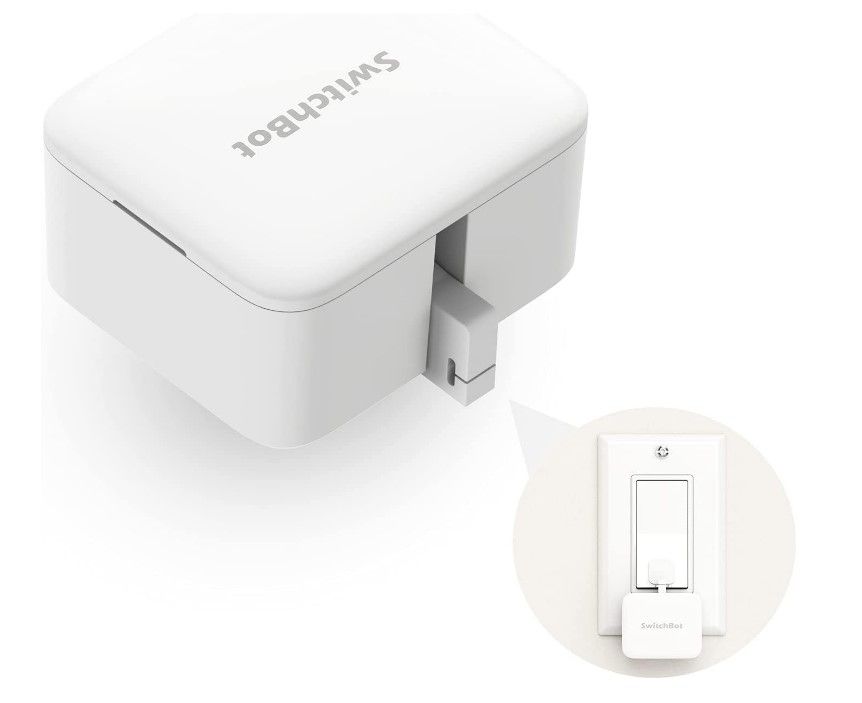
SwitchBot
A range of smart home products that are simple to fit and manage and will bring home automation to your life controlled by voice, remote, or an app.

